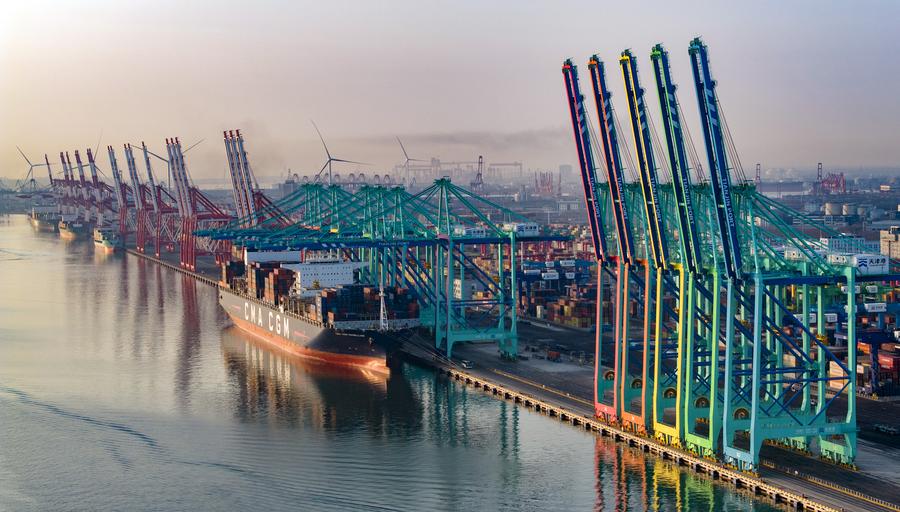
BEIJING, March 10 (Xinhua) -- China sets an economic growth target of around 5 percent for 2024.
In setting the target, the need to boost employment and incomes and prevent and defuse risks have been taken into account, and the growth rate is well aligned with the objectives of the 14th Five-Year Plan, according to a government work report awaiting approval by the national legislature.
The target also takes account of the potential for growth and the conditions supporting growth, it said.
Over the past decades, China's economy has overcome odds such as the COVID-19 pandemic, natural disasters and the global financial crisis, and has managed to maintain consistent growth while invigorating the global economy.
Since 2014, the Chinese economy has reached one milestone after another, with the country's GDP passing the 60-trillion-yuan, 80-trillion-yuan, and 100-trillion-yuan marks in 2014, 2017 and 2020. More recently, it went on to pass the 110-trillion-yuan and 120-trillion-yuan marks despite the impacts of the COVID-19 pandemic.
In 2023, China's economy grew by 5.2 percent, with the corresponding economic growth in volume exceeding 6 trillion yuan (around 845.33 billion U.S. dollars) in comparable prices. Such an increase in volume would take a 10-percent annual GDP growth rate to achieve 10 years ago.
For this year, therefore, analysts believe that an economic growth rate of around 5 percent is a goal that can be achieved through hard work, and it shows the enterprising and vigorous state of the Chinese government.
Setting such a target would help boost confidence, guide public expectations, and further build consensus on development, said Zhou Li'an, a professor at Peking University.
Optimism is shown among foreign-funded enterprises as they cast their vote of confidence for the Chinese market by increasing their investment or operations in the country.
For example, the number of stores operated by fast food chain KFC has grown to surpass 10,000 across China. In January, Airbus opened a service center dedicated to the entire lifecycle of an aircraft in the city of Chengdu, which is the first such center outside Europe for the company.
A survey by the European Chamber of Commerce in China revealed that about 59 percent of surveyed companies view China as one of their top three investment destinations.
"China's economy has sufficient internal driving force and great potential for sustained growth," said Tian Xuan, vice dean of Tsinghua University's PBC School of Finance.
For sure, the country faces challenges, such as external shocks and uncertainties, the lack of effective demand, relatively weak public expectations and over-capacity in certain sectors. Yet, generally speaking, the tailwinds outweigh the headwinds.
As a major manufacturing powerhouse, China boasts all the industrial categories listed in the UN industrial classification, and its manufacturing added value accounts for 30 percent of the world's total. It is the world's second-largest consumer market and the largest online retail market. The abundance of high-quality factors also serves as a cushion against shocks.
A series of reform measures have provided growth momentum and vitality. The country has put the development of new quality productive forces high on its agenda.
"The Chinese economy enjoys capability, advantages and opportunities to sustain growth, and the long-term positive trend remains unchanged," said Wang Changlin, vice president of the Chinese Academy of Social Sciences. ■



